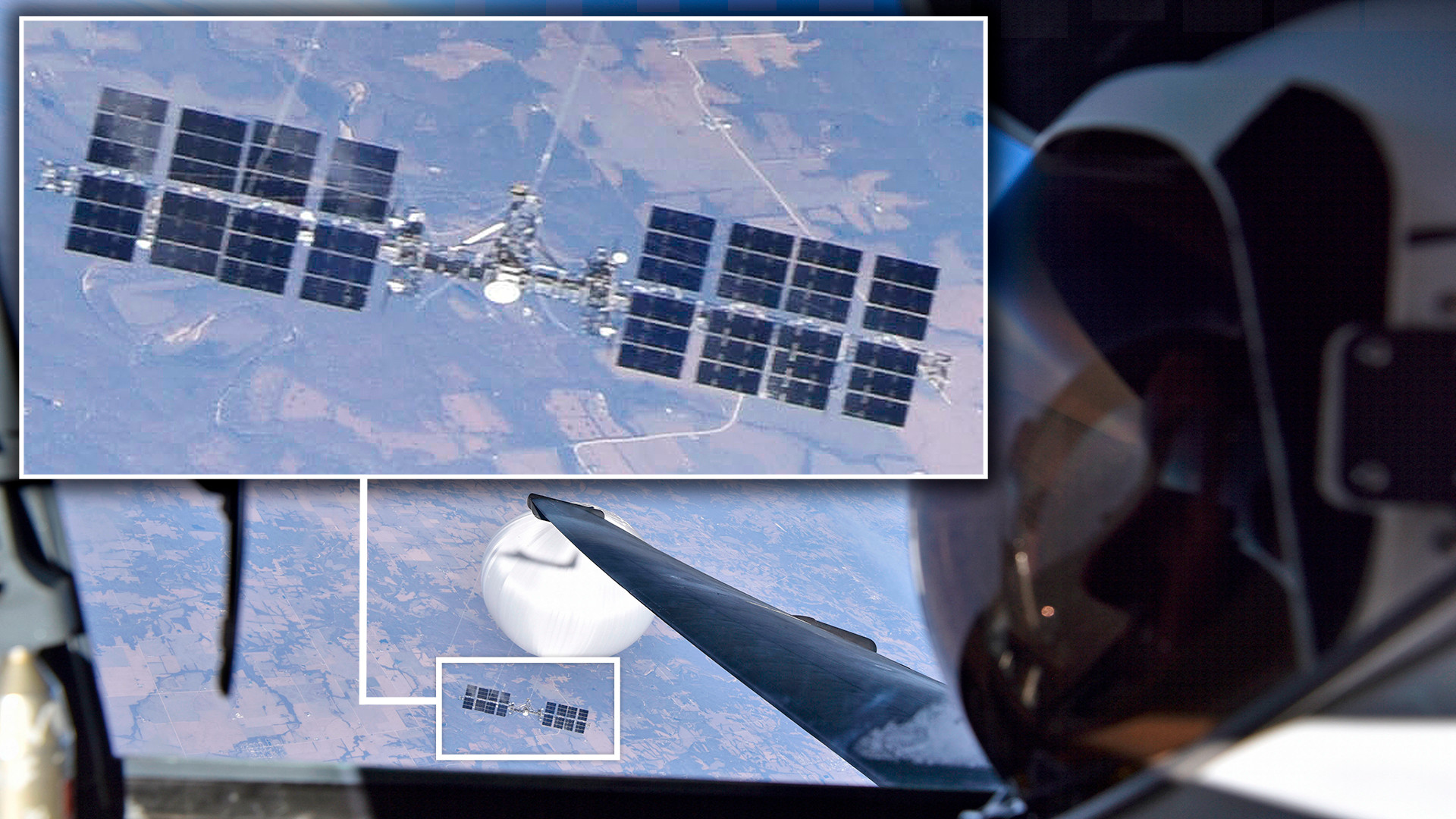- Joined
- Nov 9, 2021
- Posts
- 4,386
- Main Camera
- iPhone
Although far from a decent photo, one can still speculate a little about the balloon payload structure.
I'm guessing what is believed to be the four motor-driven propellers are used to orient the balloon and payload boom. I'm wondering if the boom can be rotated on its longitudinal axis to both keep the collection antennas, presumably on the backside of the boom behind the solar panels, oriented towards signals of interest on Earth. And from time-to-time to orient the solar panels towards the Sun to charge batteries. Perhaps the the four propellers can also make course changes (to some extent). Guessing the small white dish/disk at the boom's center is an antenna used to periodically upload collected signals data to a satellite for subsequent transmission, either real-time or stored/forwarded, to a ground station either back home, or at another location (the Chinese ground station recently constructed in Argentina, ostensibly for "peaceful space research") comes to mind. That datalink could also be used to send new signals collection tasking to the balloon's collection equipment.
It would be nice if higher resolution photos, of both sides of the boom, would eventually be released to the public. Perhaps that will be coming soon with different elements of the payload identified.

 www.thedrive.com
www.thedrive.com
I'm guessing what is believed to be the four motor-driven propellers are used to orient the balloon and payload boom. I'm wondering if the boom can be rotated on its longitudinal axis to both keep the collection antennas, presumably on the backside of the boom behind the solar panels, oriented towards signals of interest on Earth. And from time-to-time to orient the solar panels towards the Sun to charge batteries. Perhaps the the four propellers can also make course changes (to some extent). Guessing the small white dish/disk at the boom's center is an antenna used to periodically upload collected signals data to a satellite for subsequent transmission, either real-time or stored/forwarded, to a ground station either back home, or at another location (the Chinese ground station recently constructed in Argentina, ostensibly for "peaceful space research") comes to mind. That datalink could also be used to send new signals collection tasking to the balloon's collection equipment.
It would be nice if higher resolution photos, of both sides of the boom, would eventually be released to the public. Perhaps that will be coming soon with different elements of the payload identified.

Our Best Look Yet At The Chinese Spy Balloon's Massive Payload
A just declassified high-resolution image of the Chinese spy balloon taken from a U-2 shows what appear to be propellers and other features.
